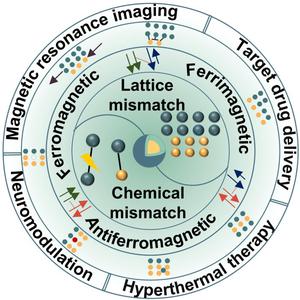Providing insight into exchange coupling within nanomagnetism: mechanism, micromagnetic simulation, synthesis and biomedical application
Abstract
Exchange coupling within nanomagnetism is a rapidly evolving field with significant implications for that plays a crucial role in the development of magnetic nanomaterials. Manipulating exchange coupling interaction enables the magnetic systems to overcome limitations associated with size-dependent magnetic behavior within nano scale, thereby improving their magnetic properties and providing for superior performance in biomedical applications compared with single-phase magnetic materials. Understanding the underlying mechanism of exchange coupling and its impact on macroscopic magnetic properties is crucial for the design and application of such magnetic materials. This review provides an overview of recent advances in interfacial exchange coupling among different magnetic modalities—ferromagnetism, ferrimagnetism, and antiferromagnetism—based on core-shell magnetic nanoparticles (MNPs). Additionally, this review discusses micromagnetic simulations to gain insights into the relationship between the microscopic magnetic structure (size, shape, composition, and exchange coupling) and the resulting macroscopic properties. The controlled synthesis of MNPs is summarized, including one-step method and two-step method. The precise manipulation of interfacial characteristics is of great importance, albeit challenging, as it allows for the fine-tuning of magnetic properties tailored for specific applications. The review also explores potential applications of core-shell MNPs in magnetic resonance imaging, hyperthermia therapy, targeted drug delivery, and advanced neuromodulation.


 求助内容:
求助内容: 应助结果提醒方式:
应助结果提醒方式:


